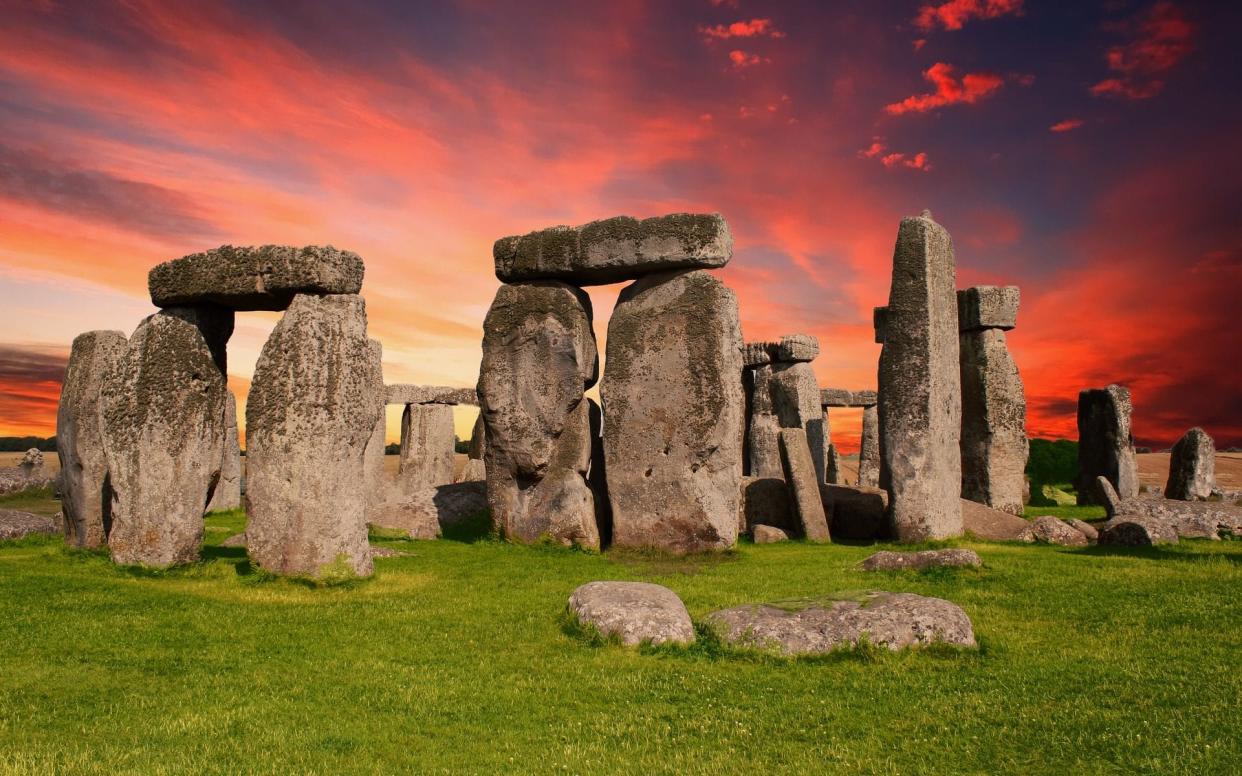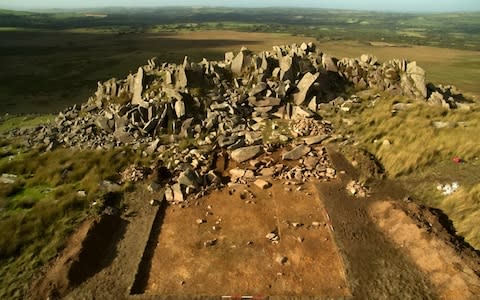Stonehenge stones did not come via the sea, new study suggests

The theory that the huge bluestones of Stonehenge were transported from Wales by sea has been debunked by archaeologists after finding the stones belong to quarries that point away from the coast.
Some 42 of the monument’s stones come from the Preseli hills in Pembrokeshire, west Wales and many experts thought that Neolithic Britons floated them from Milford Haven, through the Bristol Channel and up the River Avon.
But new excavations at 5,000-year-old quarries has pinpointed the exact location that the stones came from, which casts doubt on the watery explanation.
The largest quarry was found almost 180 miles away from Stonehenge on the outcrop of Carn Goedog, on the north slope of the Preseli hills, meaning it was far easier to go overland than take the stones around the hills to the coast.
“Some people think that the bluestones were taken southwards and placed on rafts or slung between boats and then paddled up the Bristol Channel and along the Bristol Avon towards Salisbury Plain,” said Professor Kate Welham, of Bournemouth University.
“But these quarries are on the north side of the Preseli hills so the megaliths could have simply gone overland all the way to Salisbury Plain.”
Archaeologists also identified a second quarry in the valley below Carn Goedog, at Craig Rhos-y-felin which contained rhyolite, a type of igneous rock, which was found at Stonehenge.
Excavations at the foot of both outcrops show the remains of man-made stone and earth platforms, and at a hollowed-out track linking the sites, the team recovered pieces of charcoal dating to around 3000 BC - the same period that Stonehenge was built.
Professor Mike Parker Pearson, of the archaeology department at University College London, said: “What’s really exciting about these discoveries is that they take us a step closer to unlocking Stonehenge’s greatest mystery – why its stones came from so far away.
“Every other Neolithic monument in Europe was built of megaliths brought from no more than 10 miles away.
“We’re now looking to find out just what was so special about the Preseli hills 5,000 years ago, and whether there were any important stone circles here, built before the bluestones were moved to Stonehenge.”

The bluestone outcrops are formed of natural, vertical pillars, which allowed the stones to be hewn off the rock face by opening up vertical joints and inserting wedges to prise them apart.
“An engineering colleague has suggested that hammering in a hard wedge could have created stress fractures, causing the thin pillars to crack.
“Using a soft wedge means that, if anything were to break, it would be the wedge and not the pillar,” added Professor Parker Pearson.
The bluestone pillars were then moved onto wooden sledges and dragged away, the team believes.
The new research was published in the journal Antiquity.

 Yahoo News
Yahoo News 
